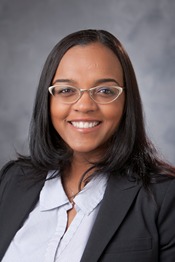Program Information
Metal Filled Carbon Nanotubes for Targeted Radiotherapy: A Feasibility Study
S Ashmeg*, E Eisenbraun , SUNY Polytechnic Institute, Albany, NY
Presentations
SU-I-GPD-T-660 (Sunday, July 30, 2017) 3:00 PM - 6:00 PM Room: Exhibit Hall
Purpose: To study the feasibility of filling carbon nanotubes with Cu-67, a beta emitter, to be used for targeted radiotherapy.
Methods: Carbon nanotubes were opened via acid reflux then filled, using the capillary effect, with solvated copper. To evaluate the copper filling of the tubes, scanning electron microscopy (SEM) and transmission electron microscopy (TEM) images were acquired. In addition to that, electron dispersive spectra (EDS) and x-ray photoelectron spectra (XPS) were collected for quantitative analysis.Cu-67 is provided in CuCl2 salt form. In order to study the feasibility of using this salt to fill CNTs with Cu, we’ve used non-radioactive CuCl2 salt instead of established Cu(NO3) salt to do a mock study of filling copper nanotubes with copper. A mock Cu-67 filling using a dilute solution of the chloride salt was performed in lab, SEM and EDS were used to analyze the results of the run.
Results: Using a 0.868 mol/L Cu(NO3) solution, EDS and XPS spectra show a copper content of more than 1.46% and 0.14% respectively in the carbon nanotubes. This content increases by two fold when the copper molar concentration in the copper nitrate solution is doubled. TEM images show a partial filling of Cu in the CNTs. For the chloride salt, EDS, SEM and TEM show success in using CuCl2 to partially fill the tubes with copper. Due to various restrictions regarding radioactive compounds, we would only be able to work with a quantity corresponding to 8μM CuCl2 with actual radioactive isotope.
Conclusion: : The results show a proof of concept of the feasibility of filling carbon nanotubes with a Cu-67 source. Due to regulations on the use and transport of radioactive copper, we would not be able to demonstrate filling with the actual radioactive CuCl2 salt.
Contact Email:
